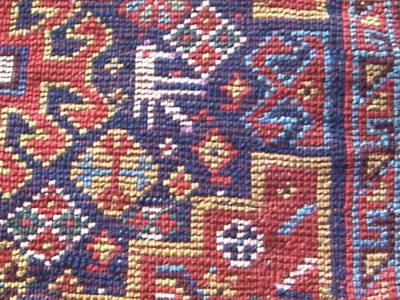Here's a Belouch khorjin that has appeared on these boards before (it appeared in Salon 32, where it was used to illustrate how design elements can be hidden by low contrast in adjacent colors).

There's a lot about it that I like. It was part of Marvin Amstey's Vanishing Jewels collection, and in an odd sort of way it introduced me to Marvin.
More appropriate to the subject at hand, it has 11 silk knots; 9 are isolated, and 2 are adjacent. Since the piece has about 100 knots to the square inch and is over 900 square inches in size, there are almost 1 million knots within which the 11 silk ones are contained. They are not visible unless you look for them. I find this interesting, since their inclusion would be known only by the owner.
Regards to all,
Steve Price


